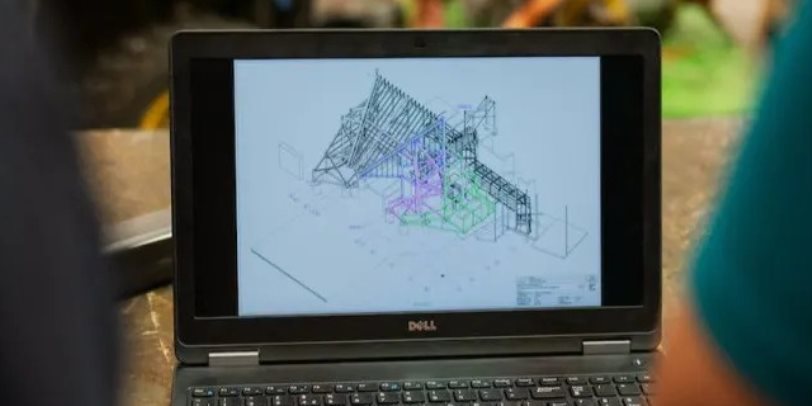Digitalizing the Future | Industry 4.0. Digitalization
To compete in the global market and maintain efficiency, Egypt needs to move ahead with digitalizing its manufacturing sector, writes staff writer Tawil

As written in our November - December 2021 issue, read the latest issue here
The manufacturing sector’s digitalization is a technological advancement that emerged in developed countries and now needs to be promoted in developing countries, thereby competing in the global market and achieving the efficiency necessary for achieving/maintaining development. The outbreak of COVID-19 made it essential to introduce such modern ICT technologies to developing states’ manufacturing industries for an expedited recovery.
Digital Industrial Processes
Digital technologies adopted in the manufacturing sector include industrial robots, 3D printing, big data and cloud computing, computer aided design and computer aided manufacturing (CAD/CAM), artificial intelligence and machine learning.
These are dubbed Industry 4.0. Digitalization, with an impact on the production location, quantity, quality of jobs, education and training, and employment contracts. However, it is still relevant to large enterprises in both developed countries and developing countries.
Delving Deep
Industry 4.0 is about the integration of the manufacturing processes, achieving a close connection between manufacturing and the value chain as well as customers. Industry 4.0 technologies are divided into core technologies and facilitating technologies. The core technologies of Industry 4.0 are the most recent and advanced ones, like additive manufacturing (3D printing), blockchain technology (storing data into blocks that get chained together), and mixed reality (creating visualizations by mixing reality and virtual objects).
As for facilitating technologies, these are the more mature ones such as networking infrastructure, industrial embedded systems (computation of realtime operations through a specific hardware/software combination), sensors, and enterprise systems (basically controlling the whole factory/company through a single software). These facilitating technologies constitute the base of core technologies.
Functions of Industry 4.0
Industry 4.0 fulfills the advanced manufacturing competency (AMC) concept through improved “human-machine interaction, interdepartmental connectivity, clarity of communication, production planning and control, and streamlining production operations,” as indicated by a paper titled “Industry 4.0, innovation, and sustainable development: A systematic review and a roadmap to sustainable innovation,” published in 2021 on Wiley Publishers.
Industry 4.0 also serves the purpose of green adaptive capacity development (GACD), which is the concept of integrating environmental changes into the business processes.
That can be achieved through artificial intelligence (AI) and real-time capability, which is the ability to collect and analyze data within a set timeframe.
The green process innovation capacity (GPSIC), which involves waste reduction and mitigating environmental impact, can be accomplished through digital technologies. Waste reduction can happen through additive manufacturing, intelligent robots, and automated guided vehicles (AGVs).
Furthermore, energy consumption can be instantly optimized according to business changes in smart factories through sensor-equipped machinery, Industrial Internet of Things (IIoT), and Cyber-Physical Production Systems (CPPS). The IIOT is also dubbed the industrial internet as it connects industrial machinery and devices, accomplishing the tasks of monitoring, data collection, exchange, and analysis as well as insight delivery.
Regarding CPPS, it means monitoring physical processes by creating digital counterparts, which enables making real-time changes using IoT.
Equally, Industry 4.0 plays a role in the activities pertinent to new product development competency (NPDC), which devises new products or develops existing ones, and the environment driven green product innovation capacity (GPTIC), concerned.
One function is sensing customer needs and preferences as well as sustainability trends through the Internet of People (IoT), involving communication among people, the Internet of Services (IoS), consisting of computer services like blockchain, and cloud data.
Another function is green product ideation, as the new product’s entire life cycle can be simulated through the digital twin technology that create a digital copy by measuring all components through sensors. Even the new product’s design process and complex prototyping can be made more efficient through additive manufacturing, augmented reality, and High-performance Computing Computer-aided Design (HPC-CAD).
Those technologies also apply to the optimization of the manufacturing and production processes.

Another function realized by Industry 4.0 is inter-functional collaboration and learning (ICL), given that the essence of digitalization is seamless communication. Better communication can be enabled by IoP and smart wearables, while learning can be facilitated by visualization and simulation technologies like augmented and virtual reality.
Digitalization also allows close value chain integration (VCI), both vertically and horizontally. Vertical integration occurs within a factory, allowing the networking of equipment, machinery, material, and human components.
As for horizontal integration, it “involves developing a hyper-connected industrial ecosystem via real-time networking of value chain partners at the regional or global scale via the Internet of Data (IoD), IIoT, IoS, and IoP,” the paper indicates.
Speaking of value chains, circular economy has been at the core of modern business and digital technology. Another paper published on the topic earlier this year in Springer, explains that big data and IoT can positively influence the circular supply chain management.
In the manufacturing sector, for instance, IoT is used to measure the fill level of waste bins and optimize routes for scrap metal bins’ transportation. According to another paper published on Elsevier, radio-frequency identification (RFID) – used in tracking tags – can be deployed in collecting information on how the product has been used, thereby estimating the quality of returned products and facilitating return flows into product life cycle management.
To sum up, IoT, big data, and analytics serve circular economy in eight ways: improving product design, attracting target customers, monitoring and tracking products, providing technical support, providing maintenance, optimizing the product usage, upgrading the product, enhancing renovation and end-of-life activities.
A Salient Step toward Digitalization
Digitalization and innovation are intertwined as tailoring technologies that are needed locally rather than importing ones is often the answer. The United Nations Industrial Development Organization (UNIDO) indicates that digital technologies require tech hubs, and that Egypt is the African country with the largest number, housing 56.
UNIDO recommends African states to support SMEs in the ICT sector and thereby fulfill such need for innovation, underlining one continental major gain should they pursue that path.
In a 2020 report, the organization explains that “intelligent vehicles carry enormous potential for enhancing mobility in Africa, thus opening up unforeseen economic opportunities.” Yet, the necessary digital infrastructure that most African countries lack poses a pivotal challenge.





